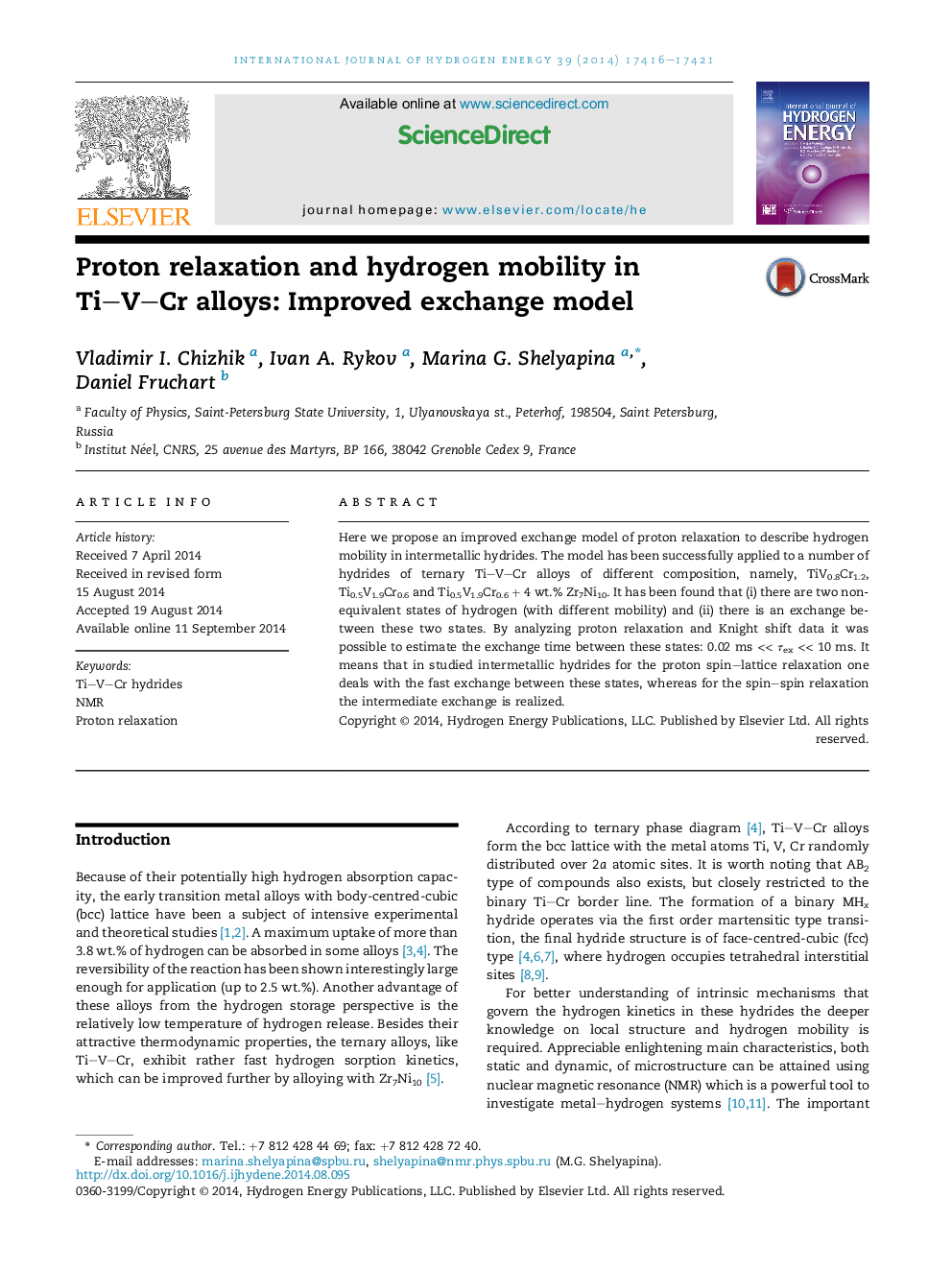| Article ID | Journal | Published Year | Pages | File Type |
|---|---|---|---|---|
| 1272198 | International Journal of Hydrogen Energy | 2014 | 6 Pages |
•1H NMR study evidence that in hydrides of Ti–V–Cr alloys the hydrogen is in two states with different mobility.•Exchange model to interpret proton relaxation is proposed.•The parameters of hydrogen motion are determined.
Here we propose an improved exchange model of proton relaxation to describe hydrogen mobility in intermetallic hydrides. The model has been successfully applied to a number of hydrides of ternary Ti–V–Cr alloys of different composition, namely, TiV0.8Cr1.2, Ti0.5V1.9Cr0.6 and Ti0.5V1.9Cr0.6 + 4 wt.% Zr7Ni10. It has been found that (i) there are two non-equivalent states of hydrogen (with different mobility) and (ii) there is an exchange between these two states. By analyzing proton relaxation and Knight shift data it was possible to estimate the exchange time between these states: 0.02 ms << τex << 10 ms. It means that in studied intermetallic hydrides for the proton spin–lattice relaxation one deals with the fast exchange between these states, whereas for the spin–spin relaxation the intermediate exchange is realized.
